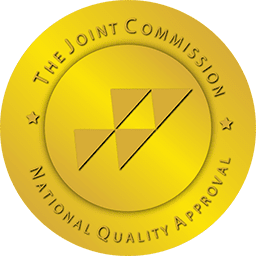Anhedonia is defined as a psychological condition characterized by an inability to experience pleasure in normally pleasurable acts. Unfortunately, anhedonia is common among people who have abused drugs or alcohol for extended periods. This is because their brain chemistry changed from substance abuse, which affected their body’s ability to understand pleasurable feelings, leading to a lack of joy.
Types of Anhedonia
There are two types of anhedonia. Both are equally debilitating, but also, both can be treated with various methods.
Social Anhedonia
Social anhedonia revolves around social situations. Decreased interest in social activities and reduced pleasure from social interactions are the main symptoms of social anhedonia. The symptoms of depression include the inability to feel happy and having a lower quality of life, which can also be used to describe social anhedonia symptoms.
Some ways to notice social anhedonia are when someone withdrawals from social elements of their life. They also fake positive emotions in social situations. An example could be a person laughing at a joke, but if you look closely at their eyes and mannerisms, they are flat.
Physical Anhedonia:
Physical anhedonia describes a person’s inability to feel pleasure from physical things that are normally pleasurable. This includes but isn’t limited to, eating, touching a loved one, and engaging in sexual interactions. This can cause a loss of interest in eating or being physically affectionate.
The physical aspects of anhedonia can be especially damaging to daily lives because, without pleasure, life becomes more of a chore. Eating to stay alive, and hugging someone because they ask, aren’t fulfilling ways to spend time.
Sexual dysfunction from anhedonia can be heartbreaking for the person suffering and their partner. There are therapies, and medications that can help, however. Ultimately, though, it can be embarrassing and enhance the social aspect of anhedonia.
What is the Connection Between Anhedonia and Addiction?
Anhedonia is a common symptom of many mental illnesses and is considered a primary symptom of major depressive disorder. Anhedonia has also been observed in schizophrenia, Parkinson’s, and substance abuse disorders. Of course, not everyone with these conditions will suffer from anhedonia. But, its presence may indicate other symptoms.
Anhedonia is a common symptom reported by alcoholics and people suffering from a substance use disorder. People who abuse drugs such as cocaine, stimulants, and cannabis are also especially susceptible to anhedonia.
Such stimulants affect the way our brains deal with stress. As a result, we are more likely to seek drugs in response to stress. The more drugs we take, the more stress affects our physical bodies and emotional well-being.
For some recovering from addiction, anhedonia noticeably improves during their first 3-9 months of sobriety. But, like most symptoms of PAWs, anhedonia comes and goes. Some people in recovery have more damage to their brain chemistry from long-term use, which can lead to long-lasting anhedonia.
What is Happening in the Brain?
Some research indicates that conditions of anhedonia might be caused by lower activity in a brain region called the medial prefrontal cortex. Experts believe that sexual anhedonia occurs because of a problem with neurochemicals in the brain. This seems to affect dopamine in particular. It causes patients to feel a disconnect between the sensation and the part of the brain that understands specific sensations as pleasure.
Social anhedonia is also thought to be related to different areas of the brain. Connections to others and social engagement require a balance between cognitive representations of self and others, activating brain areas involved in social cognition representation, including the medial prefrontal cortex and cingulate cortex. Long-term use of substances can cause imbalances in these areas, leading to a complete loss of social pleasure.
Is There Hope For Someone Suffering From a Lack of Pleasure?
While there is no anhedonia cure, there is hope for someone suffering from physical or social anhedonia. Some doctors suggest taking vitamins like iron, niacin, folate, and vitamin B6. Our bodies use these to create dopamine. If you lack them, your dopamine supply suffers, and anhedonia lasts longer. Sometimes, however, antidepressants or other medications may be needed for social anhedonia sufferers.
Social anhedonia can be easier to treat than physical anhedonia. This is because once a person reaches a certain sobriety time, their brain chemistry returns to pre-abuse levels. Paired with therapies, the social anhedonia sufferer can see drastically positive results within months.
Medications are being tested to determine if they can help with physical anhedonia. Chemical imbalances cause physical anhedonia.
How To Get Help
Depending on where someone is in the addiction cycle, there are many options for help dealing with the symptoms of anhedonia. If someone is in active addiction, getting treatment would be a great first step to helping their anhedonia symptoms. Getting into therapy would be helpful if they are in recovery and still dealing with anhedonia symptoms. Therapy can also help determine if an underlying mental illness needs to be addressed.
Absolute Awakenings can help with all stages of the addiction cycle and most mental illness diagnoses. Our admissions coordinators are well-trained in answering questions and helping to determine which course of action best suits each individual.
References
- Hatzigiakoumis DS, Martinotti G, Giannantonio MD, Janiri L. Anhedonia and Substance Dependence: Clinical Correlates and Treatment Options. Front Psychiatry. 2011;2:10. doi:10.3389/fpsyt.2011.00010
- Young CB, Chen T, Nusslock R, Keller J, Schatzberg AF, Menon V. Anhedonia and general distress show dissociable ventromedial prefrontal cortex connectivity in major depressive disorder. Transl Psychiatry. 2016;6(5):e810. doi:10.1038/tp.2016.80
- Bottaro A. What Is Anhedonia and How Does It Affect You? Verywell Health. Published September 1, 2022. Accessed January 3, 2023. https://www.verywellhealth.com/anhedonia-definition-5189496
- Healey KL, Morgan J, Musselman SC, Olino TM, Forbes EE. Social Anhedonia and Medial Prefrontal Response to Mutual Liking in Late Adolescents. Brain Cogn. 2014;89:39-50. doi:10.1016/j.bandc.2013.12.004












